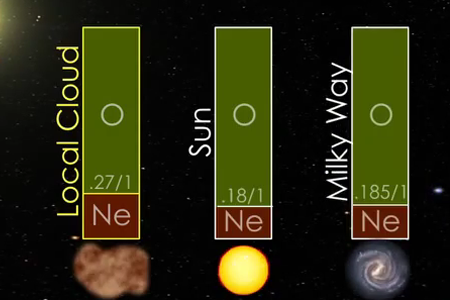NASA Probe Reveals The ‘Atmosphere’ That Surrounds Our Solar System. Rad.
NASA’s Interstellar Boundary Explorer, or IBEX, has spent four years tilling about at the frayed edges of our solar system. What has the son of a bitch found? Some really interesting things about what comprises our solar system’s “atmosphere” and theories about its formation.
Hit the jump for more.
io9:
NASA’s Interstellar Boundary Explorer, or IBEX, has spent the last four years exploring the very edge of our solar system, where giant magnetic bubbles repel incoming charged particles while neutral ones stream in on their way to the Sun.
NASA has now released this awesome video explaining just what IBEX has seen in its four years of observation. In a NASA statement, mission scientist Eric Christian explains that what we’ve found out there is nothing like what we’re used to here in the inner solar system:
“We’ve directly measured four separate types of atoms from interstellar space and the composition just doesn’t match up with what we see in the solar system. IBEX’s observations shed a whole new light on the mysterious zone where the solar system ends and interstellar space begins.”
One key difference is that there’s a much greater concentration of oxygen inside our solar system than outside. That’s good news for us, of course – we wouldn’t be here without oxygen – but it does complicate the picture for how the solar system originally formed. David McComas, the principal investigator for IBEX at the Southwest Research Institute, says there are two main possibilities to explain this:
“Either the solar system evolved in a separate, more oxygen-rich part of the galaxy than where we currently reside or a great deal of critical, life-giving oxygen lies trapped in interstellar dust grains or ices, unable to move freely throughout space.”




